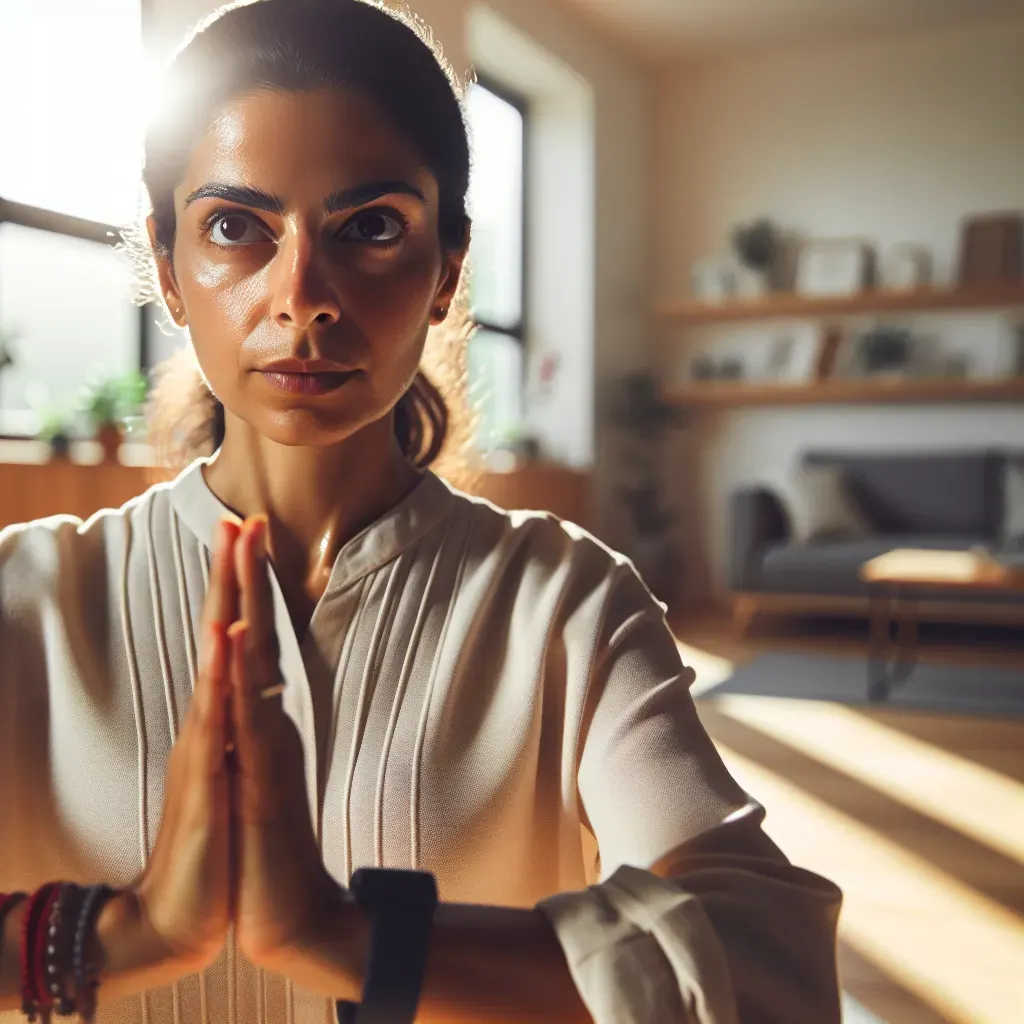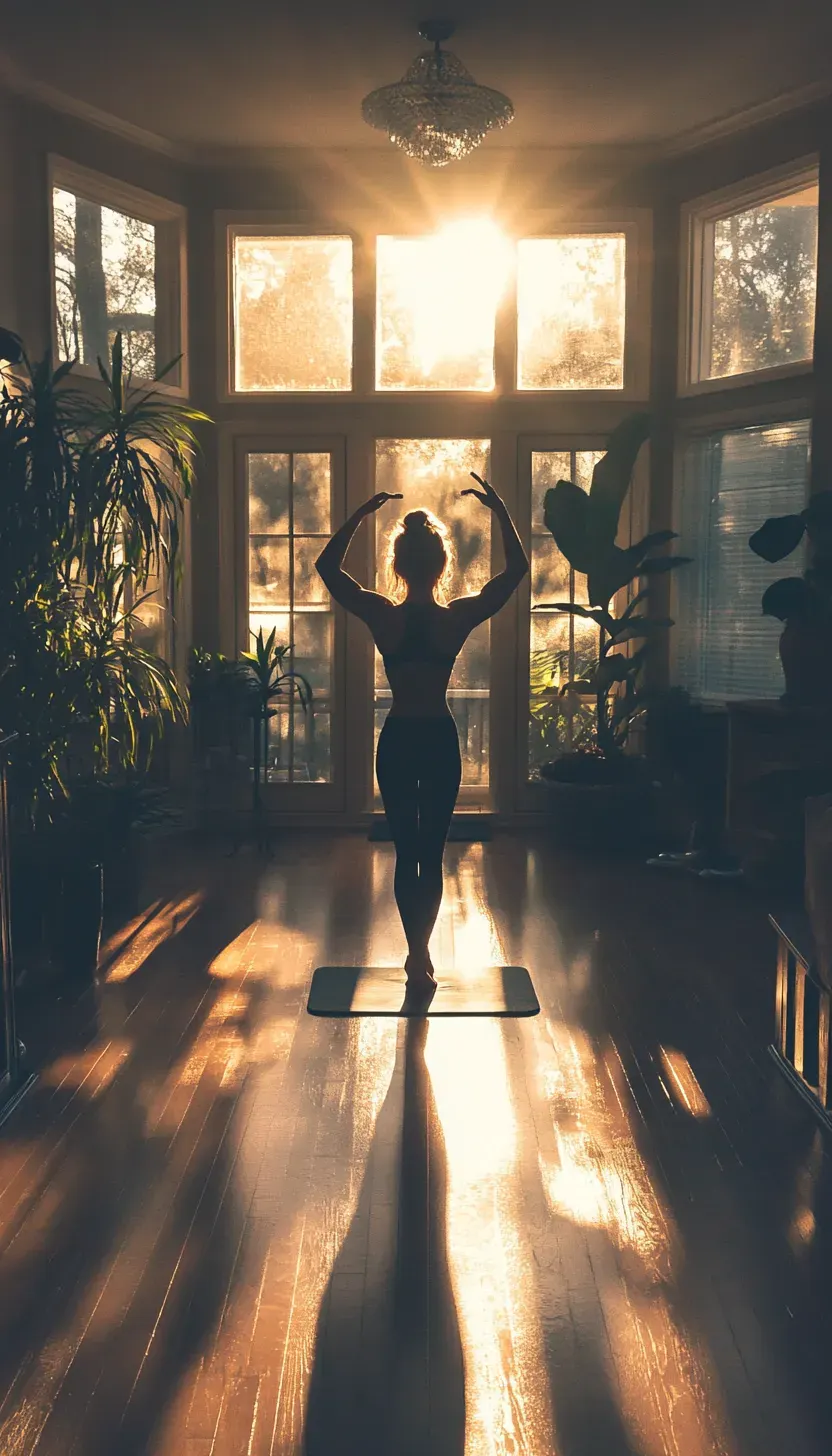How Long Before Bed Should I Do These Yoga Poses?
Table of Contents
1. Introduction
- Benefits of Bedtime Yoga
- How Yoga Enhances Sleep Quality
- Importance of Timing in Bedtime Yoga
2. Day 1-2: Preparation and Initial Routine
- Optimal Time for Bedtime Yoga
- Creating a Calming Environment
- Starting with a 20-30 Minute Session
3. Step 1: Selecting Calming Yoga Poses
- Overview of Recommended Poses
- Child's Pose
- Cat-Cow Stretch
- Forward Bend
- Legs Up the Wall
- Corpse Pose
- Learning and Practicing the Poses
- Importance of Deep Breathing and Mindfulness
4. Day 3-4: Implementing the Routine
- Setting Intentions and Finding Flow
- Importance of Consistency
- Deep Breathing Exercises
- Holding Poses for 3-5 Minutes
- Practicing at the Same Time Each Evening
- Using Reminders or Alarms
- Keeping a Journal to Track Emotions and Progress
5. Day 5-6: Monitoring and Adjusting
- Evaluating Body Responses
- Adjusting Poses for Better Sleep
- Observing Changes in Sleep Patterns
- Addressing Physical Discomfort or Difficulty
- Considering Body Clock and Energy Levels
- Personalizing Your Routine
6. Day 7: Review and Optimize
- Reflecting on Progress and Insights
- Fine-Tuning the Routine
- Noticing Patterns and Preferences
- Refining Techniques
- Final Adjustments for Optimal Results
7. Conclusion
- Recap of Key Points
- Emphasizing Long-Term Benefits
- Encouragement for Consistent Practice
- Final Thoughts on Yoga for Better Sleep
Introduction
Yoga has long been praised for its ability to promote relaxation and reduce stress, making it an ideal pre-bedtime ritual to enhance sleep quality. By incorporating gentle yoga poses into your evening routine, you can signal to your body that it's time to unwind and prepare for restful sleep. The deep breathing and mindfulness techniques practised in yoga help calm the mind, release tension in the body, and lower cortisol levels, all of which are essential for a good night's sleep.
Furthermore, regular practice of bedtime yoga has been shown to improve overall sleep patterns by regulating the circadian rhythm and promoting a sense of tranquility before going to bed. This can lead to falling asleep faster, experiencing fewer disturbances during the night, and waking up feeling more refreshed in the morning. By dedicating just a few minutes before bedtime to gentle yoga poses tailored for relaxation, you set yourself up for a peaceful night's rest that will leave you rejuvenated and ready to take on the day ahead.
Day 1-2: Preparation and Initial Routine
Practising yoga before bedtime can be a powerful way to prepare your body and mind for a restful night's sleep. By aiming to do these poses around 1-2 hours before bedtime, you give yourself adequate time to unwind and release any accumulated tension from the day. This intentional practice can signal to your body that it's time to relax and shift into a calmer state.
Choosing the right time frame for your bedtime yoga routine is crucial in maximizing its benefits. Doing these poses too close to bedtime may leave you feeling energized or stimulated, making it difficult to fall asleep. However, practising them too early could result in losing the calming effects by the time you go to bed.
Finding that sweet spot of 1-2 hours allows your body to fully absorb the soothing benefits of each pose, promoting a deeper and more rejuvenating night's rest.
When it comes to practising yoga before bed, choosing a quiet and comfortable space can make a significant difference in the quality of your practice. Creating a soothing environment free from distractions allows you to fully focus on your breath and movements, promoting relaxation and mindfulness. Whether it's a cozy corner in your bedroom or a serene spot in your living room, find a space that feels peaceful and inviting.
By selecting a designated area for your yoga practice, you signal to your mind and body that it's time to unwind and prepare for sleep. This ritualistic approach can help calm racing thoughts and reduce stress levels before bedtime. Additionally, having a dedicated space for yoga encourages consistency in your practice, making it easier to establish a pre-sleep routine that promotes better rest and overall well-being. Remember, creating the right environment sets the stage for a more restful night's sleep after completing your bedtime yoga routine.
Embarking on a 20-30-minute yoga session before hitting the bed can be a game-changer for your sleep routine. Not only does it help release built-up tension in your body, but it also allows you to unwind and centre your thoughts before bedtime. This dedicated time for yourself can serve as a calming ritual that signals to your mind and body that it's time to relax and prepare for rest.
Selecting Calming Yoga Poses
Step 2: Select calming yoga poses such as Child's Pose, Cat-Cow Stretch, Forward Bend, Legs Up the Wall, and Corpse Pose. These poses are not just physical exercises; they offer a mental retreat too. Child's Pose is soothing for the mind and body, helping to release tension in the back and shoulders. Cat-Cow Stretch encourages mindfulness through the flow of movement and breath synchronization.
Forward Bend is excellent for calming the nervous system and relieving stress from a long day. Legs Up the Wall promotes relaxation by allowing blood flow to reverse its usual direction. Corpse Pose is a powerful way to wind down before bed, aiding in letting go of any lingering tension or worries from your day. Practice these poses with intention and focus on deep breathing to enhance their effectiveness in preparing you for restful sleep.
Research and learn these poses if you are not familiar with them. Poses like Forward Fold can help calm the mind and release tension in the body before bedtime. Exploring the Child’s Pose can promote relaxation and ease stress accumulated throughout the day. Downward Facing Dog pose is another beneficial posture to stretch the entire body and alleviate any tightness before sleep.
Understanding these poses can enrich your yoga practice and contribute to better sleep quality.
Remember, always prioritize comfort over perfection when practising these poses at night. Each individual may experience different benefits from these postures, so take time to listen to your body's unique needs during your bedtime yoga routine.Incorporating these new poses into your pre-sleep sequence might just be what you need to unwind fully and prepare for a restful night's sleep. So, why not give them a try tonight?
Day 3-4: Implementing the Routine
As you begin incorporating yoga poses into your evening routine, consider the intention behind each posture. Let them symbolize a physical and mental release from the day's stresses, creating a space for tranquillity and mindfulness. Explore the connection between breath and movement, allowing your practice to flow effortlessly.
Remember that consistency is key to reaping the benefits of these evening yoga poses. As you build this ritual into your night-time routine, observe how it positively impacts your sleep quality and overall well-being. Embrace the transformation happening within your body and mind as you commit to this calming practice before bedtime.
Deep Breathing Exercises
As you embark on your bedtime yoga routine, consider starting with 5 minutes of deep breathing exercises to truly set the tone for relaxation. This simple yet powerful action can help calm your mind, slow down your heart rate, and prepare your body for a restful night's sleep. By focusing on each inhale and exhale, you create a connection between your mind and body, allowing for a sense of grounding and presence in the moment.
Deep breathing exercises also serve as a gentle reminder to release any tension or stress that may have accumulated throughout the day. This intentional act of mindfulness can pave the way for deeper relaxation during your yoga session, enabling you to fully immerse yourself in each pose with a clear and focused mind. By incorporating this short breathing exercise at the beginning of your practice, you not only enhance the physical benefits of yoga but also nurture your mental well-being.
Slow and Mindful Practice
Performing each yoga pose slowly and mindfully has the power to truly transform your practice. When we slow down and focus on each movement, we allow ourselves to connect more deeply with our breath and body. Holding each pose for 3-5 minutes may seem challenging at first, but it offers a unique opportunity to explore discomfort and find peace within it.
This intentional approach not only enhances the physical benefits of the poses but also nurtures mental clarity and emotional stability. By practising patience and taking the time to fully engage with each posture, we invite a sense of mindfulness that extends far beyond the mat. Embrace this slow-paced journey as a gateway to cultivating inner stillness and self-awareness before bedtime, setting the stage for a restful night's sleep.
Practising yoga at the same time each evening can significantly enhance its benefits. Consistency is key in establishing a routine that aligns your mind and body. By committing to a regular schedule, you cultivate discipline and create a sense of harmony within yourself. The repetition of these yoga poses at the same time each day helps establish a deep connection with your practice.
Establishing A Routine
Moreover, setting aside this specific time for yoga each evening creates a sacred space for self-care and reflection. It allows you to unwind from the demands of the day and tap into a state of relaxation before bed. This unwavering dedication to your practice can become a form of meditation in motion, guiding you towards inner peace and balance. Consistency in timing not only enhances physical progress but also promotes mental clarity and emotional well-being.
Setting a reminder or alarm to establish a new habit, such as practising yoga before bed, can be a game-changer for those struggling to make it a consistent part of their routine. By associating a specific time with this activity, you are creating a mental cue that reinforces the behaviour practising. This can help combat forgetfulness and procrastination, ultimately increasing the likelihood of success in forming this beneficial habit.
Additionally, integrating reminders or alarms into your daily schedule for yoga practice can serve as an act of self-care and prioritization. It sends a signal to your mind that taking care of yourself is important and worthy of dedicated time and attention.
By making this conscious choice to set aside moments for relaxation and mindfulness through yoga before bed, you are actively investing in both your physical and mental well-being, nurturing yourself in a holistic way that goes beyond just the physical practice itself.
Keeping a Journal
Keeping a journal to track your emotions before and after a yoga session can offer profound insights into your mental and emotional well-being. By jotting down your feelings, thoughts, and physical sensations pre and post-yoga, you create a powerful tool for self-reflection and growth. You might notice patterns emerging, certain poses that always lift your spirits, or moments of unexpected emotional release as the practice unfolds.
This reflective practice can help you cultivate mindfulness both on and off the mat. Not only does it deepen your awareness of how different yoga poses impact you personally, but it also encourages a greater connection with your inner self. Over time, this journal becomes a treasure trove of wisdom - offering cues on when to push harder or ease up during your yoga sessions based on how you feel emotionally and mentally in that moment.
Day 5-6: Monitoring And Adjusting
In the realm of practising yoga before bed, evaluating how your body responds to different poses is crucial. Each person's body is unique, and what feels soothing for one individual might be uncomfortable for another. Pay attention to any sensations or areas of tension as you move through the poses – this awareness can guide you in selecting a sequence that truly benefits your body.
Furthermore, by tuning into your body's responses, you can tailor your bedtime yoga routine to promote better sleep. For instance, if certain poses make you feel energized or restless, consider replacing them with more calming stretches like forward bends or gentle twists.
Remember that the goal of bedtime yoga is relaxation and preparation for sleep, so prioritizing poses that foster a sense of calm and ease will enhance its effectiveness. By being attuned to how your body reacts to different postures during your pre-sleep practice, you can cultivate a personalized routine that supports both physical well-being and restful slumber.
As you incorporate yoga into your bedtime routine, pay close attention to how it affects your sleep quality. Many individuals report falling asleep faster and experiencing a more restful night's sleep after practising certain yoga poses before bed. This improvement in sleep quality may be attributed to the calming effects of yoga on the nervous system, helping to reduce stress and anxiety levels that often interfere with sleep.
Noticing changes in your sleep patterns can provide valuable insights into which poses work best for you. By observing how your body responds, you can tailor your yoga practice to better support your individual needs and enhance your overall well-being. Whether it's the gentle stretches that relax your muscles or the mindful breathing exercises that calm your mind, incorporating yoga into your bedtime routine can significantly contribute to a more rejuvenating and peaceful night's rest.
Day 7: Reviewing Your Progress
Practising yoga before bed has the potential to significantly improve your overall well-being and help you feel more relaxed and centred. As you commit to incorporating yoga into your nightly routine, take a moment to reflect on the positive changes it brings. Notice how your body gradually releases tension and stress accumulated throughout the day. Embrace the sense of calmness that envelops you as you settle into each pose, allowing yourself to fully unwind.
Not only does yoga promote physical relaxation, but it also cultivates mental tranquillity by encouraging mindfulness and deep breathing. By dedicating this time to yourself each evening, you are prioritizing self-care and nurturing a healthy habit that can lead to better sleep quality. Trust in the process and acknowledge the progress you make along the way. With each practice session, you are investing in your overall well-being, setting the stage for a peaceful and rejuvenating night's sleep.
Conclusion
Embarking on a journey to integrate yoga into your bedtime routine can be transformative. By following this week-long plan, you can discover the profound benefits that a consistent and mindful practice brings to your sleep and overall well-being. Yoga before bed not only helps in releasing physical tension but also fosters a deep sense of inner peace and relaxation.
As you continue to explore and refine your bedtime yoga routine, remain attentive to your body's signals and needs. Personalizing your practice will enhance its effectiveness and ensure that it supports restful and rejuvenating sleep. With dedication and mindfulness, you can cultivate a nightly ritual that not only improves your sleep quality but also enriches your daily life with tranquillity and balance.
People Also Asked
1. How long before bed should I do yoga?
Answer: Aim to practice yoga 1-2 hours before bedtime. This allows your body to unwind and absorb the calming benefits of the poses, promoting a restful night's sleep without feeling overly energized.
2. Can I do yoga right before bed?
Answer: While it’s generally recommended to finish your yoga session 1-2 hours before bed, gentle and restorative poses can be done right before lying down. Avoid vigorous or highly stimulating sequences immediately before sleep.
3. What are the best yoga poses to do before bed?
Answer: Calming poses such as Child’s Pose, Cat-Cow Stretch, Forward Bend, Legs Up the Wall, and Corpse Pose are ideal for promoting relaxation and preparing your body for sleep.
4. How long should my bedtime yoga routine be?
Answer: A 20-30 minute session is sufficient for most people. This duration allows you to engage in several poses and deep breathing exercises without feeling rushed.
5. What should I focus on during my bedtime yoga practice?
Answer: Focus on gentle stretches, deep breathing, and mindfulness. Pay attention to your breath and how your body feels in each pose, aiming to release tension and promote relaxation.
6. Can yoga help with insomnia?
Answer: Yes, yoga can help with insomnia by reducing stress and anxiety, calming the mind, and promoting a sense of tranquillity. Regular practice can improve overall sleep patterns and quality.
7. Is it okay to fall asleep during my yoga practice?
Answer: It’s okay if you feel sleepy or even fall asleep during restorative poses like Corpse Pose. The goal is to relax your body and mind, so if you drift off, it means your practice is effectively calming you.
8. How often should I do yoga before bed for the best results?
Answer: Consistency is key. Practising yoga before bed 3 to 4 times a week can significantly improve sleep quality. However, daily practice can be even more beneficial for establishing a solid nighttime routine.
9. What should I do if a pose feels uncomfortable or painful?
Answer: If a pose feels uncomfortable or painful, modify it or skip it altogether. The goal of bedtime yoga is to relax and prepare for sleep, so prioritize comfort and ease over pushing yourself too hard.
10. Can beginners do bedtime yoga?
Answer: Absolutely. Bedtime yoga is suitable for all levels, including beginners. Start with simple, gentle poses and gradually build your practice as you become more comfortable with the movements and techniques.





